Hair Transplant Recovery Timeline: Your Complete Guide to the First 30 Days After Hair Surgery
If you’ve recently undergone a hair restoration procedure or are considering one, you’re likely wondering what the hair transplant recovery timeline looks like. The first 30 days after hair transplant are crucial in ensuring graft survival, achieving natural-looking results, and setting the foundation for healthy, long-term hair growth.
This comprehensive guide offers a clear, day-by-day hair transplant recovery timeline, along with actionable aftercare tips to support healing and optimize your outcome.
What to Expect in the First 30 Days After Hair Transplant: A Day-by-Day Guide
Here’s what you should expect in the first 30 days after hair transplant, from immediate healing to the shedding phase. Knowing what’s normal during your hair transplant recovery timeline can help you stay informed, reassured, and on track for great results
Day 1: Immediately After the Hair Restoration Procedure
On the first day following your hair transplant, the bandage applied to the donor area is removed at the clinic. Patients might feel mild discomfort, but if the procedure has been performed correctly, with the right punch tools, at the proper depth, and with precision, significant pain is not expected.
However, patients with low pain tolerance or high sensitivity may be provided with pain relievers by the hair transplant clinic. It’s essential to use medications like Paracetamol (also known as Acetaminophen), which do not interfere with blood clotting or healing.
Painkillers like Ibuprofen and Aspirin should be avoided, as they can increase bleeding risk.
In FUE hair transplant procedures, minor bleeding is not dangerous since it typically involves capillaries, but care should still be taken.
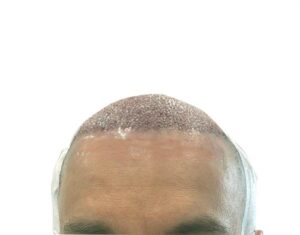
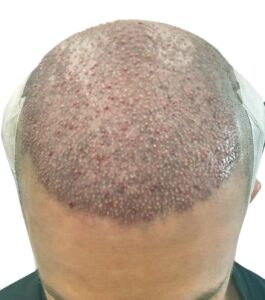
Day 1: First Wash and Hair Transplant Post-Op Instruction
On this same day, the first post-operative hair wash is performed. During this session, patients are taught how to properly wash their scalp at home during the recovery period.
The first hair wash should be carried out very gently, using lukewarm water and avoiding direct pressure on the scalp. Pressurized water must never be used.
After washing, the scalp can be air-dried or should be dried using a single-use paper towel or a clean towel using a patting down motion so as not to cause too much friction on the grafts.
The donor area is then treated with antibacterial and healing creams to reduce infection risk and speed up wound recovery.
Special shampoos that do not harm the newly implanted grafts are recommended.
From this point on, patients can resume any regular medication they were taking before the procedure. Oral supportive treatments, such as supplements or medications prescribed by the clinic, can also be started. Low-level laser therapy (e.g., laser caps) may also be introduced as part of the healing protocol.
Day 3: Resuming Blood Thinners After Hair Surgery
For patients who are on blood-thinning medication, it is safe to resume usage starting from the third day after their hair transplant surgery. This delay is a precaution to avoid potential bleeding during the early healing stages.
Days 4-7: Swelling and Early Post-Transplant Sensations
During the first week post-hair transplant surgery, patients may experience swelling in the forehead and upper facial areas, particularly if a dense hairline implantation was performed.
This swelling, or edema, is caused by the tumescent fluid injected into the scalp during surgery to assist with the proper extraction of grafts. Over time, gravity pulls this fluid downward, and it is reabsorbed by the body.
In some cases, it can cause facial puffiness and eye swelling. To minimize swelling, patients should sleep with their head elevated at approximately a 45-degree angle for the first week post-transplant. Sleeping face down should be strictly avoided.
It is also recommended to apply a cold compress to the forehead and to drink plenty of fluids to reduce swelling or puffiness.
At Civas & Akpınar Hair Restoration Clinic in Turkey, we use a custom-formulated tumescent solution that significantly reduces post-hair transplant swelling thanks to years of experience and clinical optimization.
During this part of the hair transplant recovery timeline, the healing scalp may feel itchy or tight due to drying skin and the formation of scabs. Patients may experience mild discomfort, which can usually be relieved with antihistamines or soothing products recommended by the clinic’s dermatologists.
Pain is generally rare, but if necessary, Paracetamol-based painkillers can be used. Donor area healing also progresses during the first 30 days after hair transplant, though patients should avoid saunas and similar activities that can affect the healing process.
Days 7-10: Scab Shedding and Continued Hair Transplant Healing
By the end of the first week and into the beginning of the second, scabbing (or crusting) in the transplanted area typically begins to flake off. Patients can start gently removing the scabs by softening them with natural oils such as baby oil or olive oil.
However, it’s important to avoid forceful scratching or rubbing. At our clinic, product recommendations are tailored to the patient’s skin type (dry, oily, sensitive) to support healthier healing and better hair transplant outcomes.
Seeing a few hairs fall out with the scabs is completely normal and to be expected. This is not a sign of failure. In fact, the grafts take root in the first 3-4 days following hair transplantation, and the hair shafts that fall out are part of the natural hair cycle.
The excisions in the donor area will also heal during that time and close up. The non-extracted hairs will also start to grow.
Patients can resume light physical activity, but intense workouts, swimming, steam rooms, or the sea should still be avoided.
Any vitamins or dietary supplements may also be resumed during this stage.
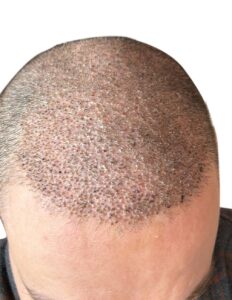
Day 10: Hairline Becomes More Visible
Around Day 10 after hair transplant surgery, the donor area no longer has open wounds, though some residual redness may be present, especially in areas where many grafts were extracted. This redness typically fades over time, depending on the patient’s skin type and sensitivity.
Days 10-15: Transitioning to Personal Products Post-Hair Transplant Surgery
Once the scabs have completely fallen off, patients can start using their personal shampoo, ideally one recommended by the hair surgeon or dermatologist based on their scalp condition.
For those who continue to experience hair thinning or loss, a personalized treatment plan may be suggested by Dr. Civas or Dr. Akpınar, which could include topical therapies such as Minoxidil, oral medications such as Finasteride or Dutasteride, or specialized products such as LLLT helmets.
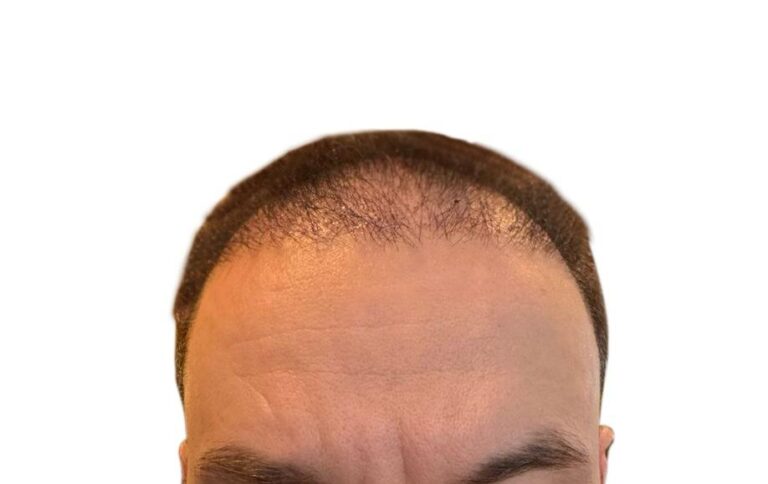
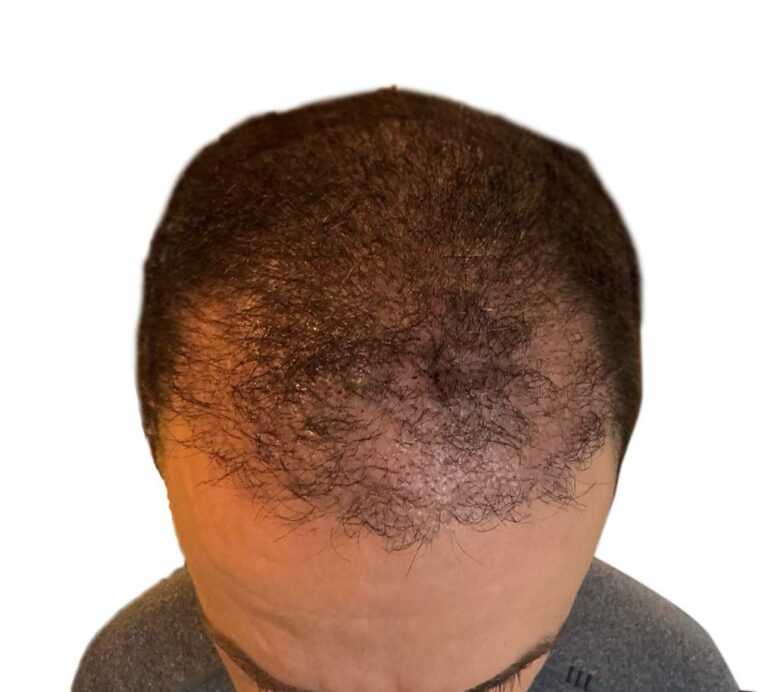
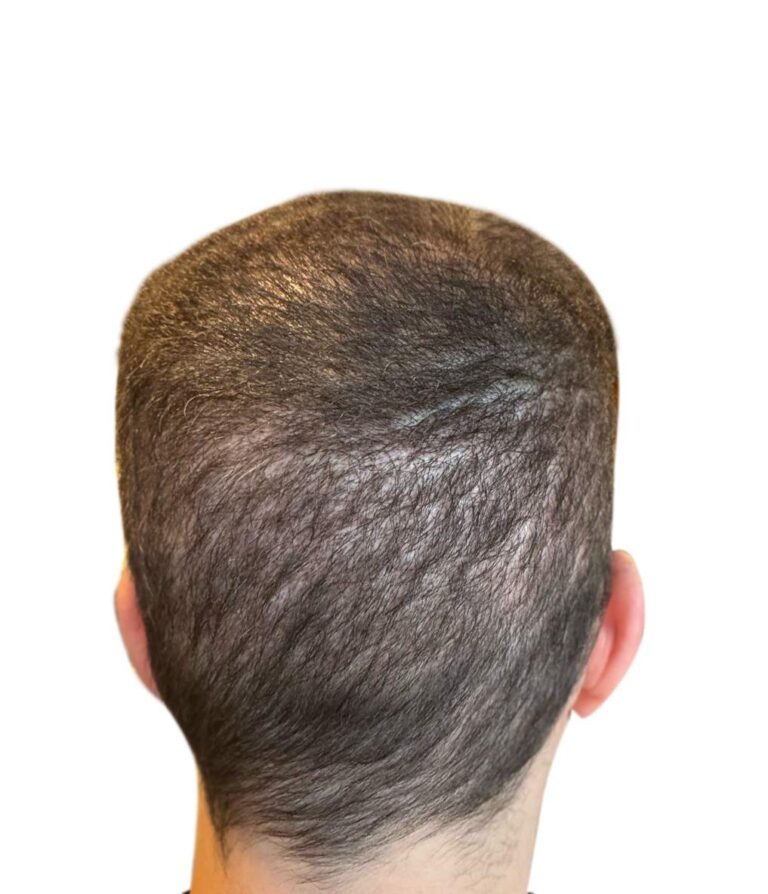
Days 15-30: After Hair Transplant Shedding and Ongoing Recovery
The period between Days 15 and 30 is marked by a temporary shedding phase. Patients may notice that the newly transplanted hairs begin to fall out. This is known as “shock loss” and is a completely normal part of the hair growth cycle. Transplanted follicles enter a resting phase before producing new, permanent hairs in the coming months. Topical treatments, such as Minoxidil, may be initiated during this phase, usually from Day 15 onward, as directed by your doctor.
Some patients may experience prolonged redness or slight pink discoloration, particularly those with sensitive skin. Others might see small pimples forming in the recipient area, typically after the first 30 days after hair transplant, which is another normal part of the regrowth stage.
It’s important to avoid dyeing your hair for at least four weeks following surgery. While dyeing before the procedure does not pose a risk, post-operative dyeing can irritate the scalp and negatively affect graft retention. Any physical trauma to the scalp, such as bumping into doors or sharp objects, should also be avoided.
In case of any accidents or unusual symptoms, patients should contact their hair transplant clinic immediately.
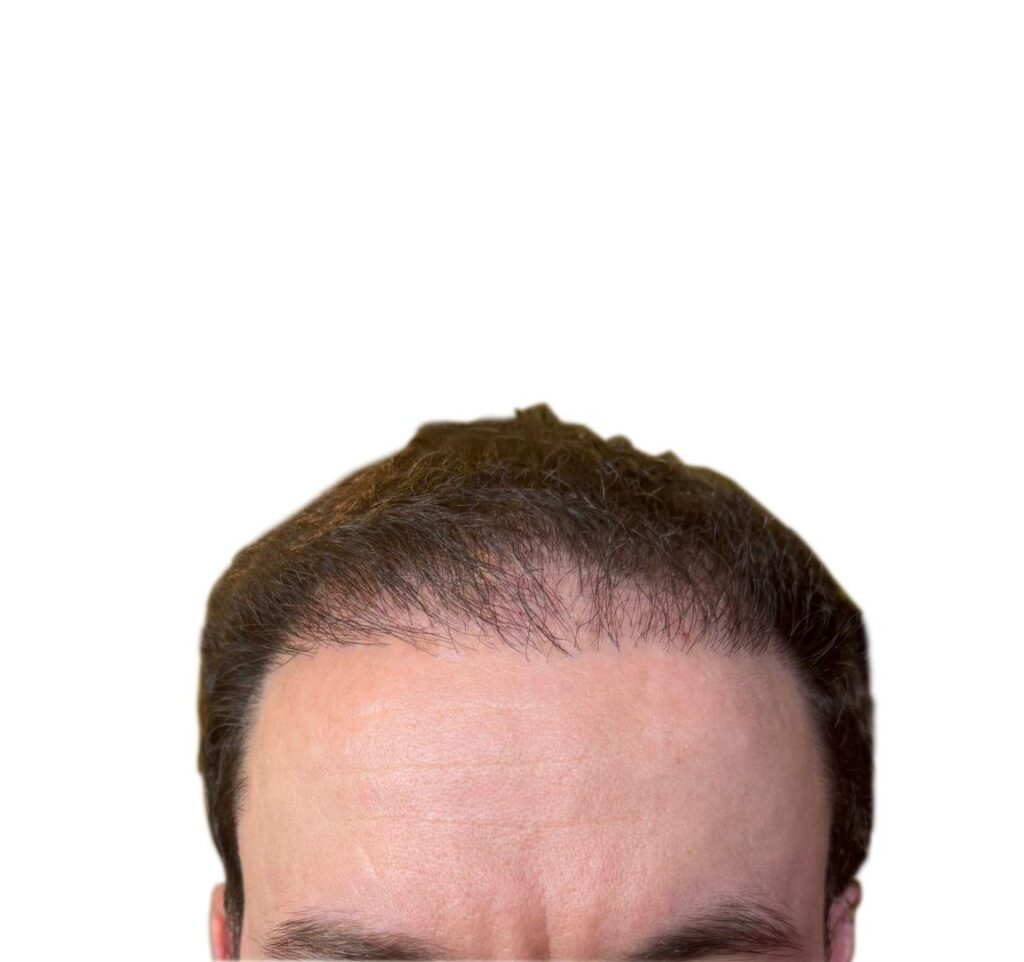
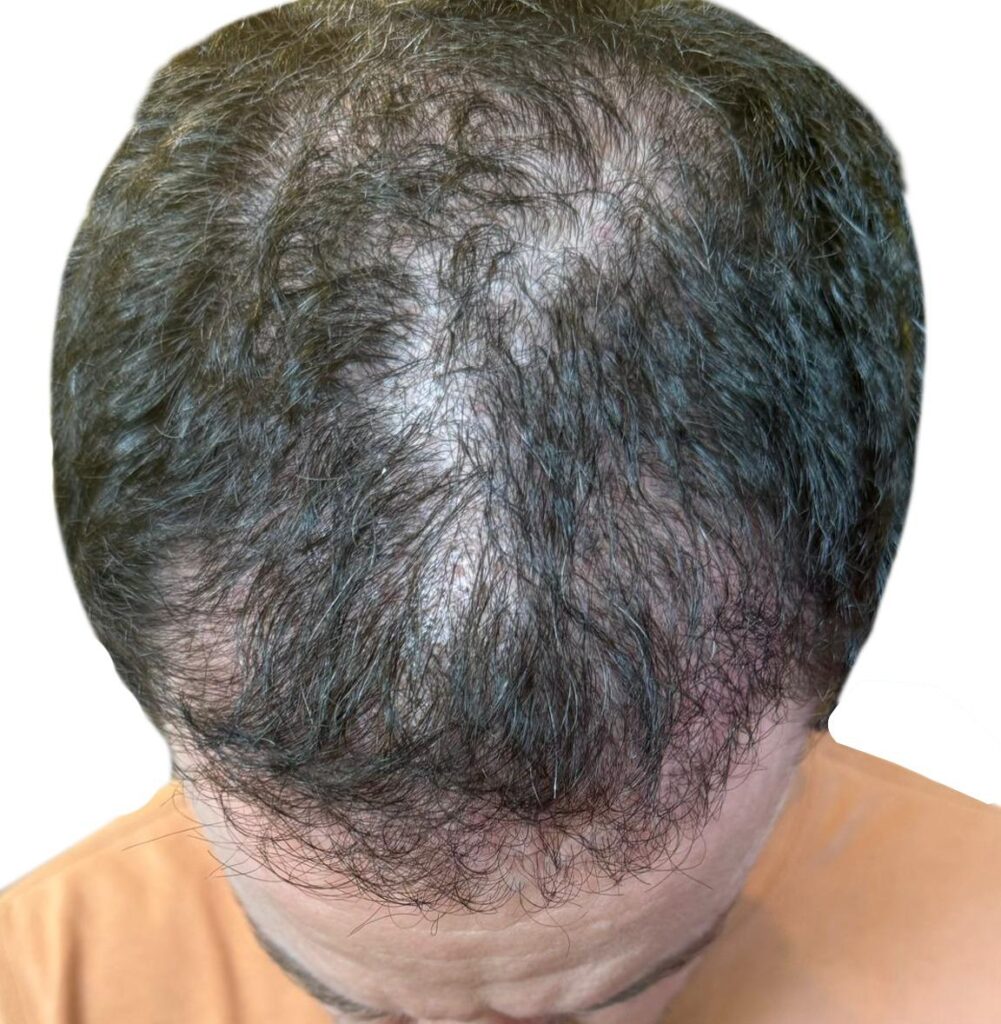
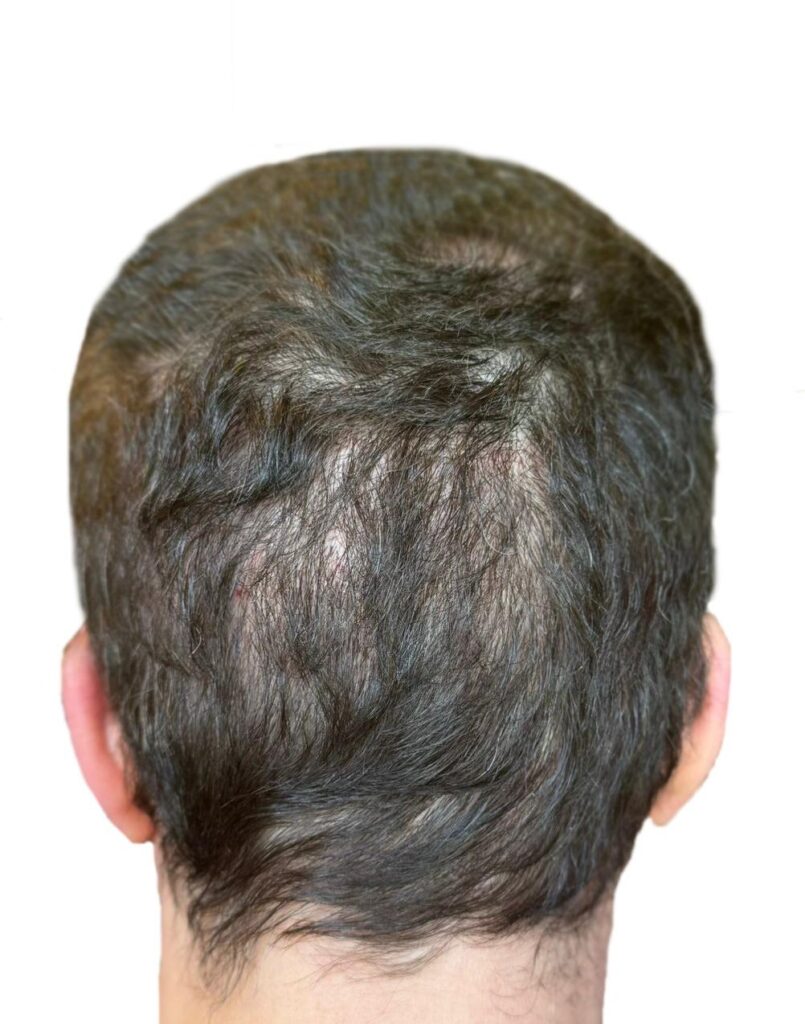
Key Do’s and Don’ts in the First 30 Days After Hair Transplant
Post Hair Transplant Do’s:
- Follow your clinic’s washing instructions
- Sleep with your head elevated
- Use only recommended products
- Contact your clinic with any concerns regarding hair transplant aftercare
Post Hair Transplant Don’ts:
- Use unapproved painkillers (e.g., Ibuprofen)
- Swim or engage in intense workouts early on
- Dye your hair in the first 4 weeks
- Scratch or pick at scabs
When to Call Your Hair Restoration Clinic:
- Unusual pain or swelling
- Signs of infection (pus, severe redness)
- Persistent redness beyond the first 30 days after hair transplant
- Trauma or bumps to the transplanted area
Additional Hair Transplant Aftercare Tips
As your scalp continues to heal and adjust during the first 30 days after hair transplant surgery, here are a few important additional hair transplant aftercare tips to keep in mind to ensure a safe and successful recovery:
- Many patients believe transplanted hair won’t fall out. However, the shedding phase is normal and part of a healthy hair growth cycle. At any time, 10–15% of your hair is in the shedding phase, so there’s no need to worry.
- Between Days 1-10, it’s crucial to monitor for any signs of necrosis or discoloration in the recipient area. If you notice pus or infection, contact the clinic immediately.
- From Day 15 onward, some patients may develop pimples in the recipient area. This is a common reaction as new hair begins to grow, especially around Day 30.
- From Day 15 onward, some patients may develop pimples in the recipient area. This is a common reaction as new hair begins to grow, especially around Day 30.
Frequently Asked Questions (FAQ) About Hair Transplant Recovery Timeline
When can I wash my hair after the transplant?
The first gentle wash is usually done on Day 1 at the clinic, where you’ll also learn how to care for your scalp properly. From then on, use lukewarm water and avoid strong water pressure for the first 10 days.
When can I start wearing hats again after a hair transplant?
It’s best to avoid wearing hats or anything that puts pressure on the transplanted area for at least the first 10 days. After this period, you can wear loose-fitting hats carefully, ensuring not to irritate or rub the scalp.
For more information, explore our dedicated page: Best Hat After Hair Transplant
How long does swelling last, and how can I reduce it?
Swelling typically occurs between Days 4 and 7 and can be minimized by sleeping with your head elevated at a 45-degree angle and avoiding sleeping face-down.
When can I resume physical activities like exercise or swimming?
Can I dye my hair after the transplant?
When can I travel after a hair transplant?
You can usually travel within a few days after the procedure, but it’s best to avoid long flights or strenuous trips during the first week to minimize swelling and discomfort. Always follow your clinic’s specific advice and make sure you can maintain your post-op care routine while traveling.
When can I go in the sun after a hair transplant?
Direct sun exposure after a hair transplant should be avoided for at least 2-4 weeks. UV rays can damage the healing scalp and affect graft survival. If you must be outside, wear a loose-fitting hat (after day 10) or stay in shaded areas to protect the transplanted area.
July 4, 2025


